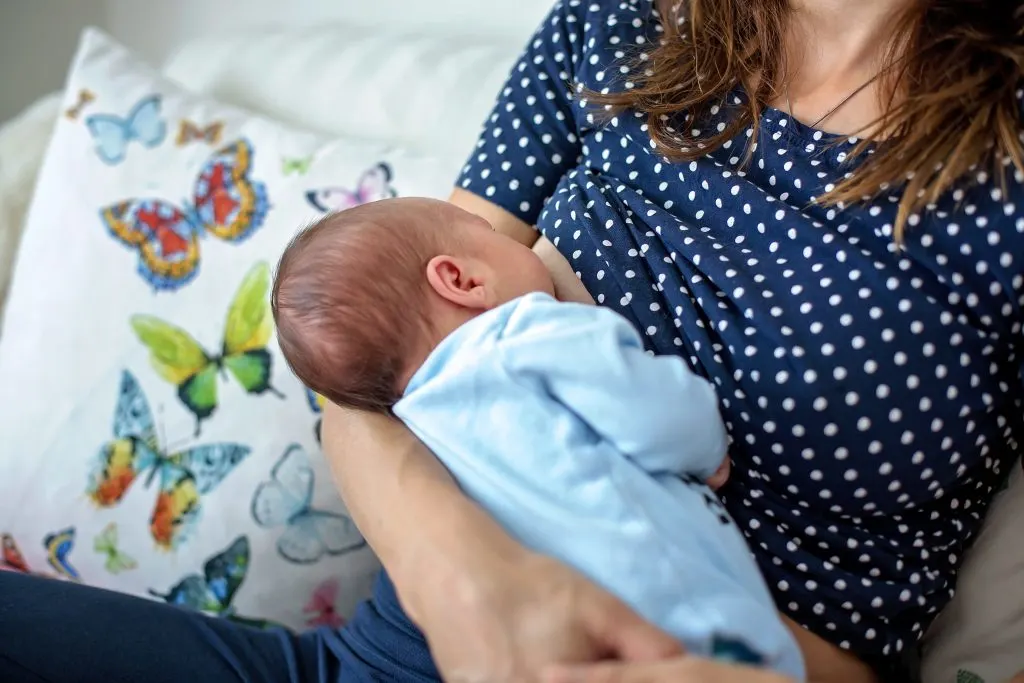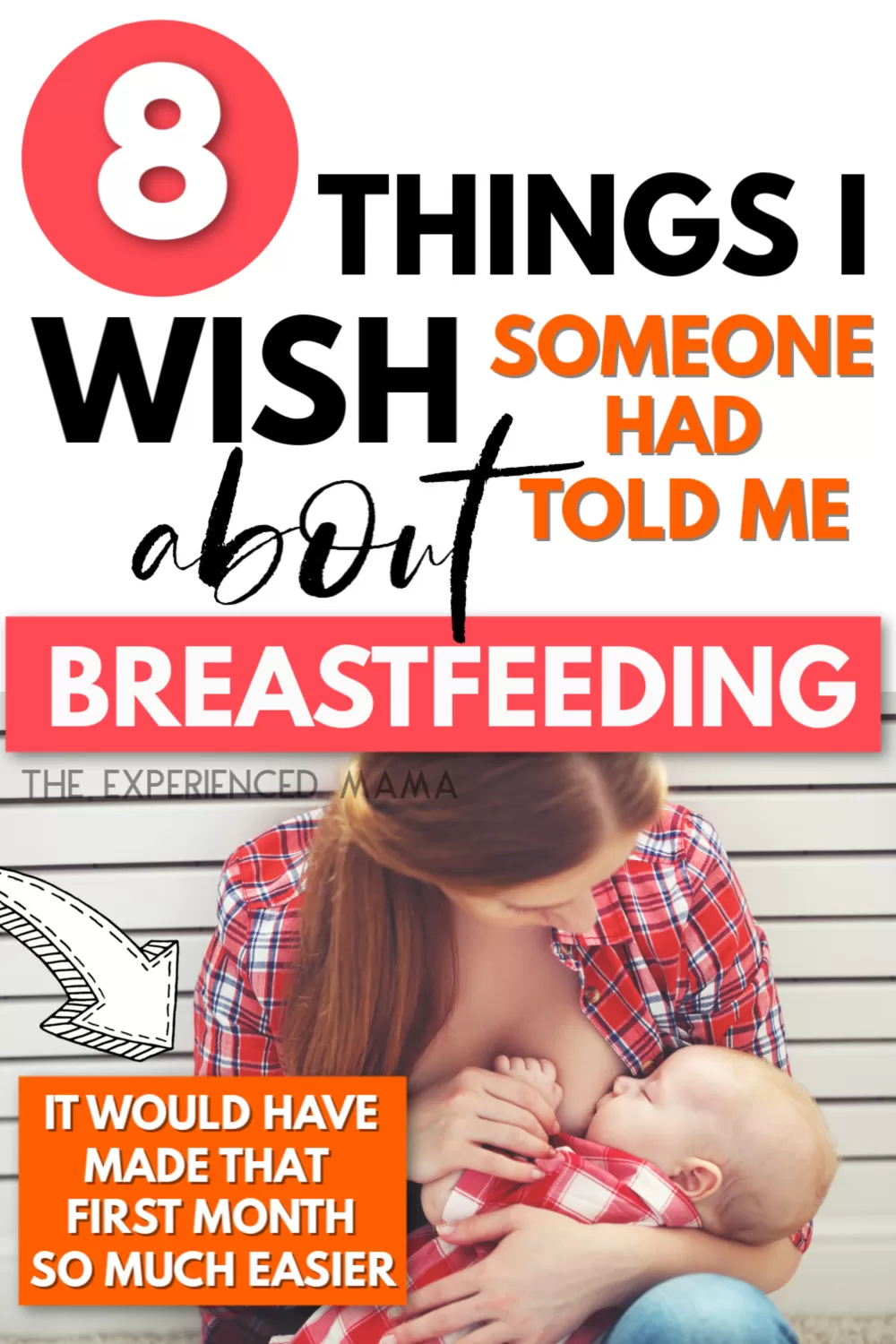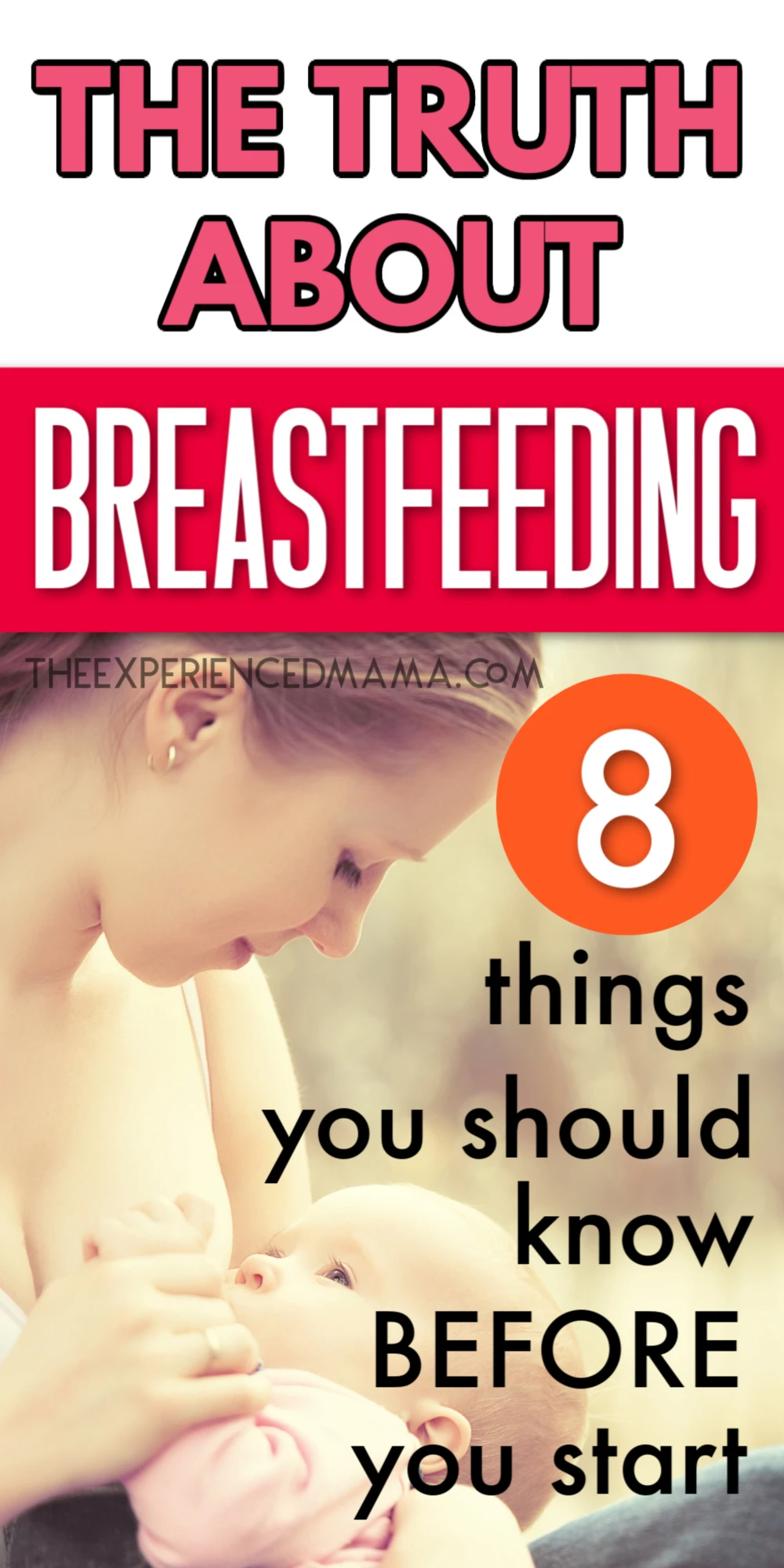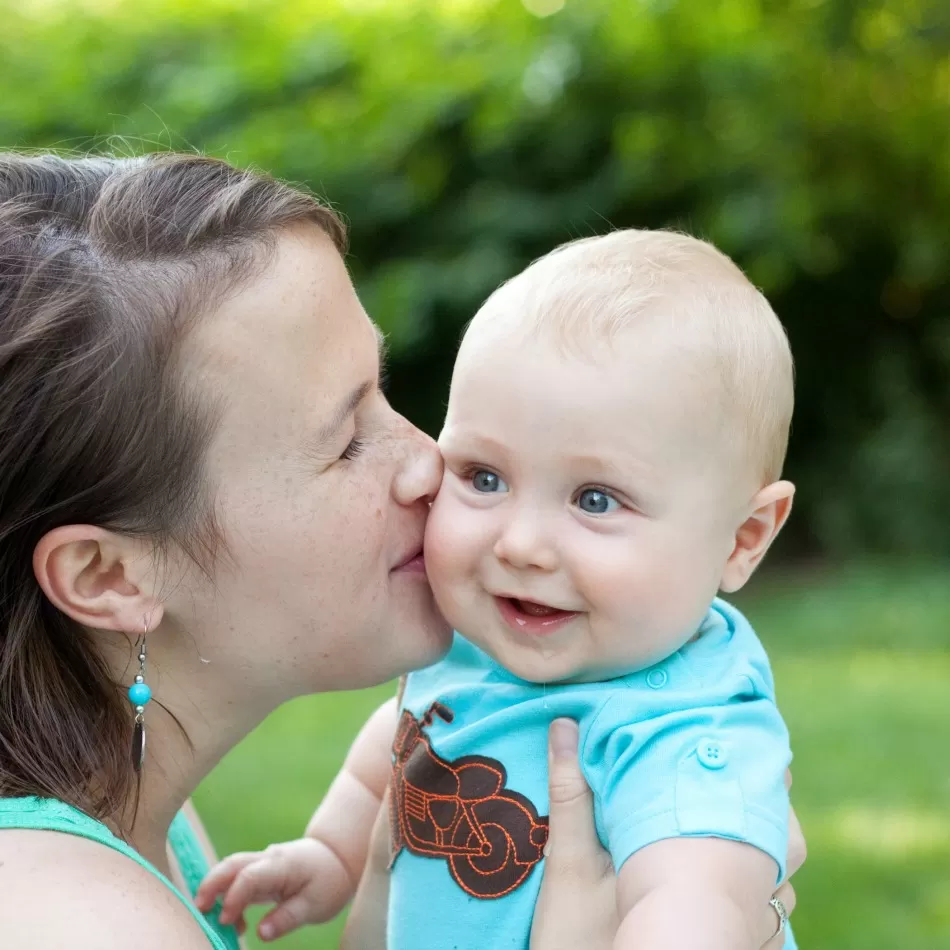Inside: When you’re pregnant, you’re mostly focused on growing a healthy baby and how the heck you’re going to get that baby out. But for most moms, breastfeeding is the next big thing, and there are several things to know about breastfeeding before you start.
During all nine months of pregnancy, breastfeeding is the last thing on your mind.
Just.get.through.pregnancy.
It briefly occurs to you during childbirth classes, or when a girlfriend mentions having difficulty breastfeeding, that breastfeeding may not be as easy as it looks. Maybe you should spend more time learning about breastfeeding than childbirth…

(THIS POST PROBABLY CONTAINS AFFILIATE LINKS. IF YOU LIKE LEGAL JARGON, YOU CAN READ OUR FULL DISCLOSURE POLICY HERE).
You know, more time than 10 minutes in a childbirth class surrounded by first-time parents you don’t know, which, by the way, is one of the most awkward experiences ever.
Speaking of: Want to skip all that awkwardness?
THIS class is all online, created by a labor and delivery nurse.
Watch at home, in your PJs. Minus the sideshow of a very uncomfortable man trying to figure out where to put his hands on his wife’s body during a particularly unnatural looking labor position. Oh, the joys of in-person childbirth class!
Aaaaand after that passing thought about breastfeeding education, you go back to reading up on labor and delivery. Because obviously, labor and delivery is the more pressing concern.
After you actually manage to survive bringing your child into the world, breastfeeding will be a breeze! Right?
Wrong.
It’s only natural to focus all your thoughts and research on labor, but you really (really really) need to set aside time to learn about breastfeeding, too. After all, you spend nine months pregnant, but once the baby is actually HERE, breastfeeding and baby sleep will be your new obsessions.
Because breastfeeding? It’s anything BUT easy.
And no one tells you that.
Related: 20+ Best Gifts for Nursing Moms – Practical AND Thoughtful

8 Things to Know About Breastfeeding
I’m a realist. I don’t love when people sugarcoat things or make things out to be easier or better than they actually are.
I like when people give it to me straight.
Here’s all the things I wish someone had told me about breastfeeding, the real deal about breastfeeding. I breastfed all my babies (4 and counting) and after I made it through the first few months with my first, I loved nursing for the most part.
But knowing these things beforehand would have helped me prepare emotionally, mentally and physically for the challenges of breastfeeding.
Hopefully you’re reading this before you have your baby, and unlike me, you can benefit from knowing these things in advance!

1. Breastfeeding doesn’t always come naturally.
For whatever reason, I thought that breastfeeding would be the most natural thing in the world: both for me and for baby.
I pictured delivering my baby, and breastfeeding going smoothly right from the start.
First-time labor rarely goes smoothly, so why did I ever expect breastfeeding to?
Brace yourself mama. It takes time to get it down pat.
Yes, your baby’s natural instincts will kick in; she’ll find your nipple and latch on. But a proper latch is learned, and if you let her persist with a bad latch, you (and she) will pay for it later.
It took me at least two months to not be extremely paranoid about proper latch. Eventually, it becomes natural, but it can take several weeks before it’s second nature.
Just remember that breastfeeding is a learned skill – for both of you. You will need to work at it.
2. Breastfeeding freaking hurts, at least at first.
While breastfeeding shouldn’t hurt in the long run (that’s a sign something isn’t right), it will hurt for the first week or two. Unless your nipples are super tough, baby latching on will take your breath away, and not in a good way.
That doesn’t even include your milk coming in. When your milk first comes in, your boobs will hurt.
Ouch. I hurt just thinking about it.
Your boobs will be bigger than they’ve ever been in your life, and not amazing bigger. Big, stretched (yep, boob stretch marks are a thing – yippee) and sore.
You won’t even recognize them.
As your body figures out how much milk it actually needs to produce to satisfy your baby’s demands, your boobs should become much less engorged, hurt less and possibly drop an entire cup size.
Because your breast size will fluctuate, waiting to buy your nursing bras for 2-3 weeks is a good idea. Stick to nursing tanks until you know your true, nursing cup size.
Lanolin can help with sore nipples during the first couple weeks, but the pain from engorged breasts can only be relieved by lots of lots of nursing.
Ironic isn’t it? To relieve one pain, you have to endure another.
If you learn how to help your baby latch on correctly, the pain should go away in a week or two. (This course will teach you all about proper latch!)
3. Blocked ducts are the worst.
Probably because I was the first in my friend group to have kids, and I started having kids at an early age, I never heard about blocked ducts until I actually had one.
One day, I woke up to a sore breast with a red, particularly painful spot on one breast. That’s when I went searching for blocked duct remedies– as well as tips for preventing blocked ducts in the future.
A few days of extra nursing, regular doses of Tylenol, and warm compresses on those sore milk ducts, and I was back to normal. But the memory stuck with me.
You better believe I was extremely careful during every nursing session after that! It turns out there is a lot you can do to during every breastfeeding session to prevent blocked ducts.
Remember when I said breastfeeding doesn’t come naturally? It is definitely a learned skill.
4. Pumping isn’t always faster or easier than breastfeeding.
I assumed that pumping was an essential part of a breastfeeding mom’s life. I had to pump.
It turns out pumping isn’t easy for every mom. For me? It was a pain in the butt!
Each pumping session had to be perfectly timed so that I had enough milk for the next breastfeeding session. Pumping took longer than nursing, and it seemed to yield much less milk for the same amount of effort.
Between the actual pumping sessions themselves, cleaning the breastpump, and cleaning bottles, I decided it wasn’t worth my time. As a stay at home mom who was with my baby 24/7, I didn’t need to nurse.
In fact, it was easier not to pump at all.
After a few months, I weighed the pros and cons of pumping and decided I would trade my freedom for the next 6-8 months for the annoyance that was pumping.
I tried pumping briefly with my next two babies and abandoned it even faster than the first time around.
You don’t have to pump if you don’t want to. You just need to decide if it’s actually worth it to you.
If you do decide to pump on a regular basis, this course is the most thorough resource I’ve seen for pumping mamas.
5. Trying different breastfeeding positions can be a game changer.
I knew different nursing positions existed and that moms used them (remember those 10 minutes in childbirth class that I talked about earlier?). But when I actually started nursing, I used one position only – the classic crossover hold – for the longest time.
Every other position felt awkward and uncomfortable.
Then one day, I was chatting with other new moms about breastfeeding, and somehow the side lying position came up. The key to this particular breastfeeding position is you can nurse while lying down.
Learning how to nurse lying down seriously changed my life.
I could finally get some rest while nursing! Also, sitting up to nurse for every single breastfeeding session can lead to persistent lower back pain, even with a boppy pillow.
Using different positions gave my back a break.
Changing positions can help you get more rest in the long run, but new positions take practice. Try (and practice) different positions until you have 2-3 you can use on a regular basis.
6. Breastfeeding is a messy business.
It never occurred to me that breastfeeding would be so messy. I thought I would nurse the baby, and then the milk would stop flowing immediately.
Yeah, right.
Maybe that’s true for some moms, but it certainly wasn’t for me.
I leaked all.the.time. I must have set a new record for the number of nursing pads you could go through in a day.
And it didn’t stop after the first month. I leaked for months!
Besides leaking after a breastfeeding session was finished (or just before or in between nursing sessions for that matter), breastmilk spilled out of baby’s mouth during and after nursing. I went through so many burp cloths just to stop myself from getting soaked, let alone to actually burp the baby.
Be prepared for you (and baby) getting wet from breastmilk on a regular basis.
And a LOT of laundry.
7. Babies need regular bottle feedings if they are going to take a bottle at all.
My husband did not do well with waking up in the middle of the night. And baby certainly wasn’t going to take a bottle from me.
Combine that with family not living nearby, and me being a stay-at-home mom, I didn’t have many obvious reasons to use a bottle other than the very occasional date (we didn’t have money to pay a babysitter).
But it turns out if you want your baby to take a bottle, you need to give a bottle at least every few days. Otherwise, she will forget how to use it and will eventually refuse to take one.
Combine no real need to use a bottle with pumping being my least favorite thing, and I gave up bottle-feeding altogether.
8. Some babies spit up constantly, and it’s pretty gross.
None of my babies were actually diagnosed with GERD or reflux. They never required medication.
They just spit up constantly.
On their own clothes. On my clothes. On furniture. On the carpet.
Besides lack of sleep, spit-up is seriously my least favorite part of the baby stage.
If your baby is an excessive spitter, make sure you have a lot of bibs, a lot of burp clothes, and always make sure to put baby down on a muslin swaddling blanket if you put them on the floor to save your carpet.
Also, keep your doctor up to speed on spit-up. As I said, my babies didn’t have anything serious other than seriously disgusting spit-up, but your baby might need medication or other interventions.
The Best Part About Breastfeeding
After telling you all of these things to know about breastfeeding that are less than pleasant realities, I need to tell you the best thing about breastfeeding.
Ready?
Breastfeeding creates a special bond with your baby unlike anything you’ve ever experienced before.
All that pain and learning and hard work? Totally worth it.
Every time your baby latches on and looks up at you with adoring eyes, your heart will melt with love all over again. And you’ll be so happy that you persevered.
Keep going. Learn the art of breastfeeding: it’s worth it.
You can do this.
Pretty soon, you’ll be a breastfeeding pro!
P.S. Don’t forget to check out this online breastfeeding class. Ridiculously affordable, and so thorough, it was created by a Certified Lactation Educator and mom of 3. I can’t imagine a better way to start your breastfeeding journey!


Owner of Growing Serendipity, June could talk to you all day about homeschooling, parenting, and minimalism, which she does at This Simple Balance. When she’s not homeschooling, decluttering, or blogging, she loves to enjoy perfect silence while sipping a hot cup of coffee and thinking uninterrupted thoughts—which, of course, with five kids, doesn’t happen very often.